In: Curators Picks
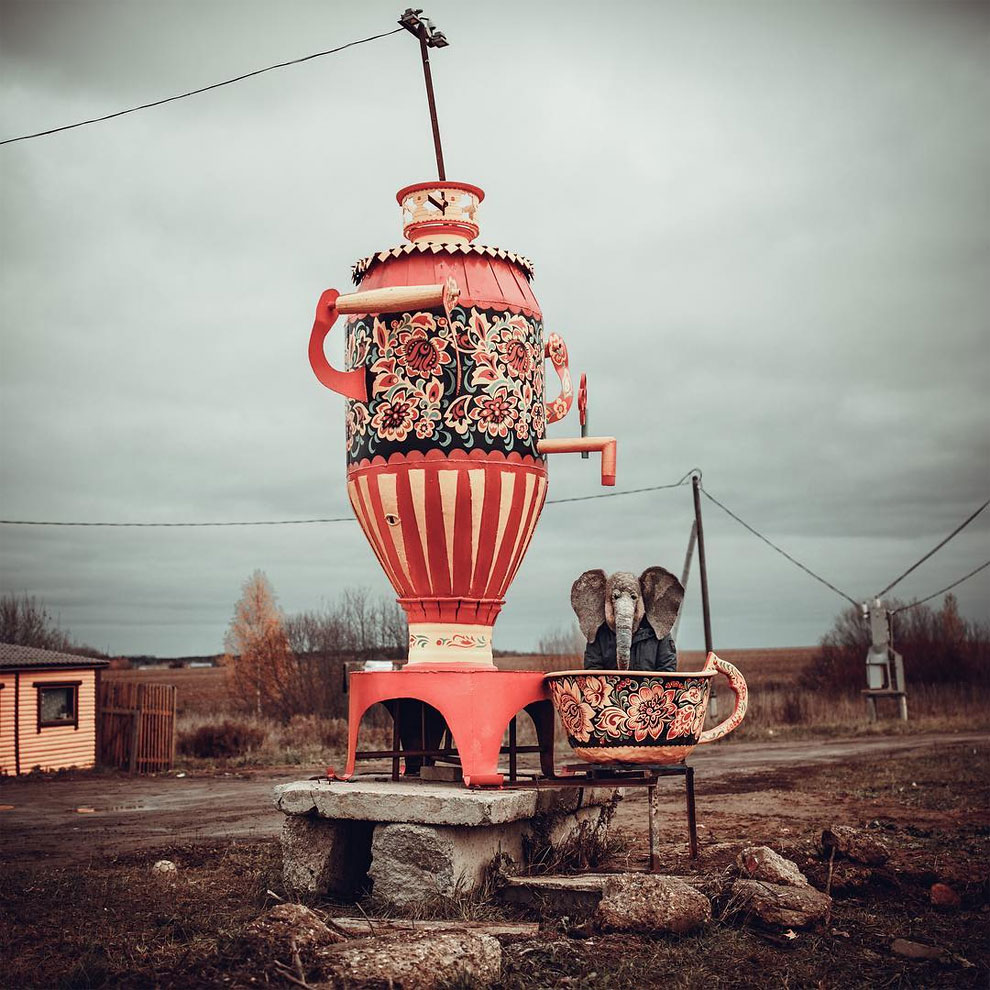
trunkdrunk
July 31, 2021Perhaps you’re familiar with the story of Pagliacci, the clown consumed by sadness he hides to make the audiences laugh. I will admit it will always be tied, for me, with Alan Moore’s Watchmen. In that graphic novel, Rorschach offers something of a lonely graveside eulogy for the character The Comedian (who ‘evolves’ from a snide position of ‘Once you realize what a joke everything is, being the Comedian is the only thing that makes sense’ to a weeping lament of “I mean, what’s so funny? What’s so goddamned funny?”). Rorshach recites a ‘joke’ about Pagliacci’s visit to a doctor, decrying his despair, only to be told by the well meaning doctor to visit the ‘famous clown’ to be cheered up. Pagliacci bursts into tears, revealing to the well meaning but unaware doctor that he is, in fact, the clown, and an empty shell who can’t even help himself…
The self described ‘comedian’ trunkdrunk occupies that same space. His Instagram page offers only that “I don’t even ask for happiness, just a little less pain.” An article on his work has the following spare and succinct comment: “trunkdrunk takes photos in Russia’s saddest places. As this was not sad enough, he takes pictures in full head overhead elephant mask. Images are captured in different places of Russia; mostly in gloomy and depressing surroundings.”
More of trunkdrunk’s images can be found on Instagram often accompanied by long swathes of text in Russian, that meld dourness, humour and memory. This image was originally posted to his IG account in October, 2016, with the following reminiscence: “Indian tea, the same – with an elephant. I remember him from my Soviet childhood. when my mother poured this Indo-Georgian mixture into a glass from a cardboard box, and then poured boiling water – the smell was stunning throughout the apartment!”
A previous Curator’s Pick of mine was a wonderful image by Alexey Titarenko: this could be said to have documented the fall of the Soviet Empire, in real time, with very real people as the unwilling players. Looking at trunkdrunk’s world, nearly forty years later, offers a new chapter to Russia history, perhaps attempting to laugh as one has no other choice, except to cry. ~ Bart Gazzola
Read More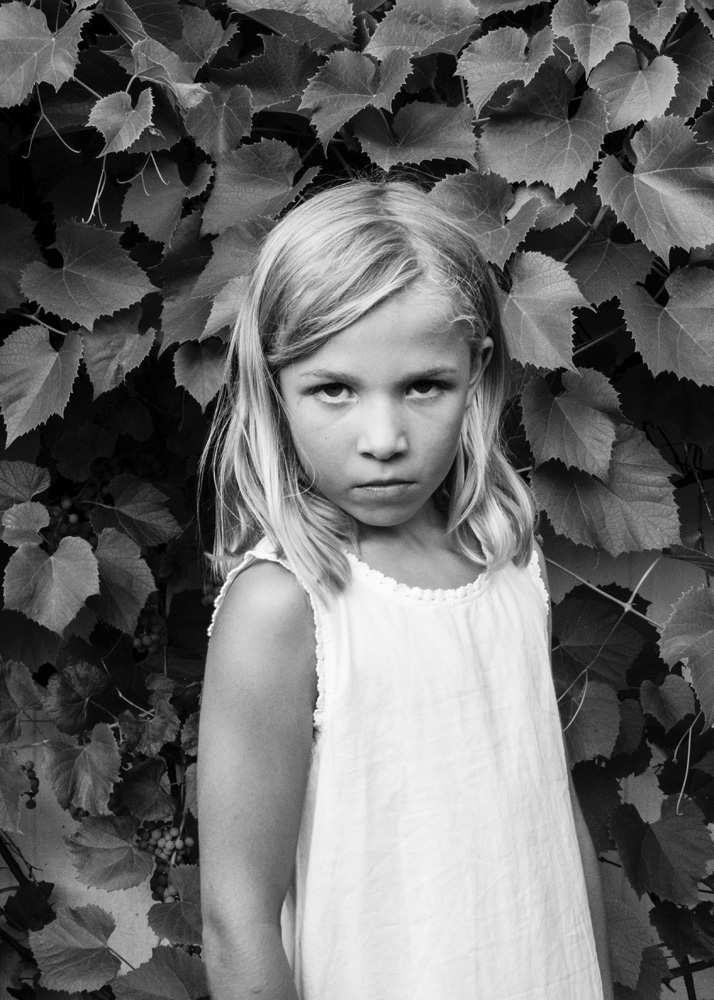
Untitled – Jennifer King
August 29, 2021Jennifer King’s photography has always intrigued me, so much so that I put this photo of hers (above) on the front cover of the first edition of foto:RE|VIEW magazine in 2019. Her work seemed to capture a certain type of childhood perfectly… all its innocence and curiosity, along with its foibles and anxieties.
Jennifer had always taken photographs but found a stronger connection with the medium after the birth of her first child. “The camera became a tool that allowed me to respond to and embrace a new identity that included motherhood. It also became a way for me to discover who my children were.”
King excels at capturing those minute, physical clues that reflect one’s emotional state: a hooded brow, the quiver of a lip, a flash of exasperation, unbridled energy brought on by wonder and adventure.
You can read more about Jennifer’s work with her children in the article BECOMING, found here at foto:RE. You follow her @jencking and contact her HERE. ~ Mark Walton
Read More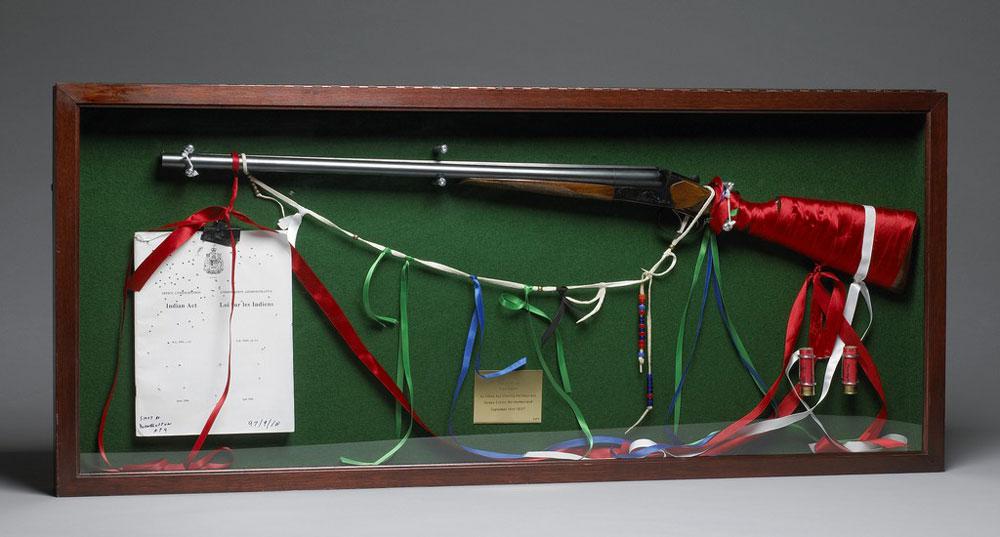
An Indian Act Shooting the Indian Act, Lawrence Paul Yuxweluptin
July 14, 2021Lawrence Paul Yuxweluptin’s An Indian Act Shooting the Indian Act, Healey Estate, Northumberland, September 14th, 1997
Lawrence Paul Yuxweluptin’s An Indian Act Shooting the Indian Act, Healey Estate, Northumberland, September 14th, 1997 is a provocative object; it’s one of those works of art that is symbolic, and resonates to a larger history. Perhaps that’s because I first experienced it – and Yuxweluptin’s accompanying artist talk – in 1999 when he had a solo exhibition at the now defunct Mendel Art Gallery, in Saskatoon. At the time, Saskatoon was finally dealing with the reality of Starlight Tours (the dumping of Indigenous men on the outskirts of the Siberian city of Saskatoon, by the police, as a standard and apparently condoned practice), and the emergence of the Reform Party (before it ate the old Progressive Conservative party alive, like a malevolent cancer). In his talk, Yuxweluptin referred to the latter as ‘hate’ dressed up in more palatable terms, but still clear to anyone who had been paying attention to the history of Indigenous – Settler relations, and the contemporary discourse of the same.
Now in the National Gallery in Ottawa, they offer the following descriptor: ‘The decorated rifle, empty bullet casings and shredded Indian Act are the remains of a live performance at Healey Estate, Northumberland, United Kingdom. In 1997, on three occasions in two different locations in the UK, Yuxweluptun shot up paper copies of Canada’s Indian Act legislation – one of the oldest and most notorious acts in Canadian history. The Indian Act, passed in 1876, remains in effect today and has made “Canada’s Indians” perhaps the most legislated peoples in North America.’
There’s a quiet rage here, that makes this work ‘worthy’ as art, despite the uncomfortable titters of many I heard then (as the Mendel was a City of Saskatoon institution, often making politicians of various levels uncomfortable with artists uninterested in sanitized, or approved ‘histories’ of the Prairies…but this was not unique to the political sphere, as many visual arts institutions there – the University’s art school, or several artist run centres, as well – were taken aback by the blunt truths of Yuxweluptin’s art, preferring lip service to reconciliation and change). ~ Bart Gazzola
Read More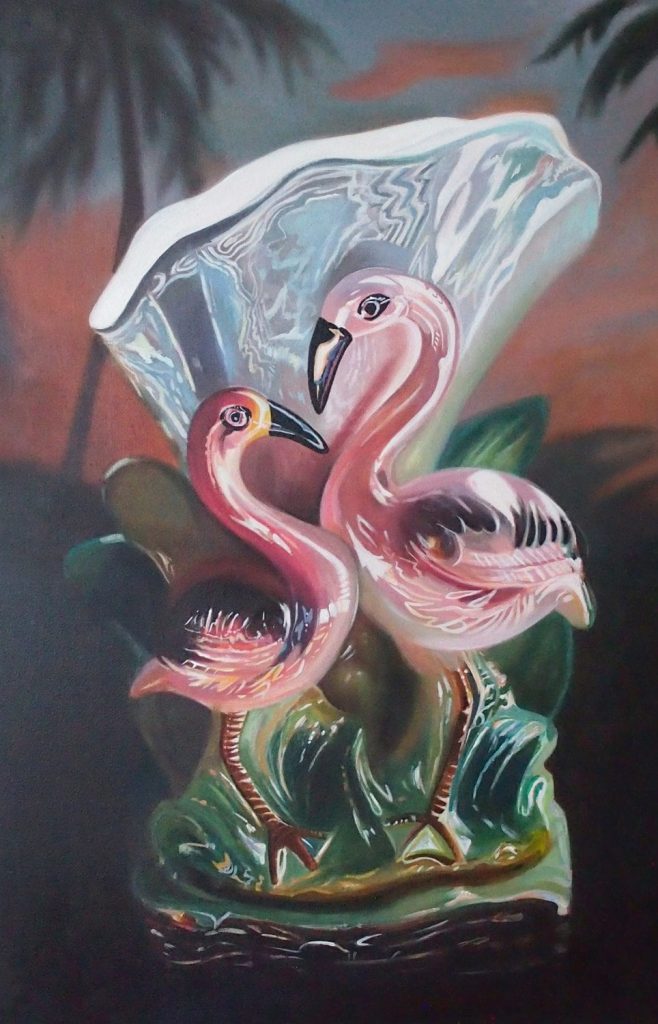
Pink Flamingos, from Melanie MacDonald’s series Florida Noir, 2017
June 28, 2021Pink Flamingos, Melanie MacDonald, from the Florida Noir series, 2017
Melanie MacDonald’s Florida Noir series is comprised of many exquisitely painted works that evoke a multiplicity of responses, such as Pink Flamingos. When we spoke about these paintings, literary references peppered our conversation. MacDonald cited Douglas Coupland (who sometimes fancies himself an artist, and some fancy as a cultural prognosticator): “Florida isn’t so much a place where one goes to reinvent oneself, as it is a place where one goes if one no longer wished to be found.” I found myself ‘speaking’ that ‘Florida is going to dissolve into madness and alligators and toxic waste’, channeling Neil Gaiman’s American Gods. MacDonald paints trinkets of the utopian dream too often projected onto Florida (as in the desperate film noir Midnight Cowboy: “It’s not, not bad, huh? There’s no heat here, but you know, by the time winter comes, I’ll be in Florida.”). In her Florida Noir series, the kitschy, almost disposable trinkets so often dismissed as touristy ‘trash’ become interesting and contested motifs for memory, or even how ‘landscape’ (with all the history and myths in that genre, real or imagined) can be encapsulated in an oft – dismissed gauche ‘souvenir’ or mundane bit of porcelain. You can see more of her work here, and read more about her practice here. ~ Bart Gazzola
Read More
Untitled, from Joe Martz’s Underpass series
July 15, 2021Waterloo Ontario based photographer and graphic designer Joe Martz has a strong eye for the architectural. His ability to capture the beauty in the details and structure of buildings and infrastructure we barely notice as we walk by them is powerful. One cannot help but begin to seek them out on one’s own after seeing his work.
A member of the foto:RE collective, Joe seeks the “strong lines, patterns and symetry” of a subject and often tries to find an “abstract perspective to present a different view”.
Joe’s work can be found on Instgram @joemartz and at joemartz.com – Mark Walton
Read More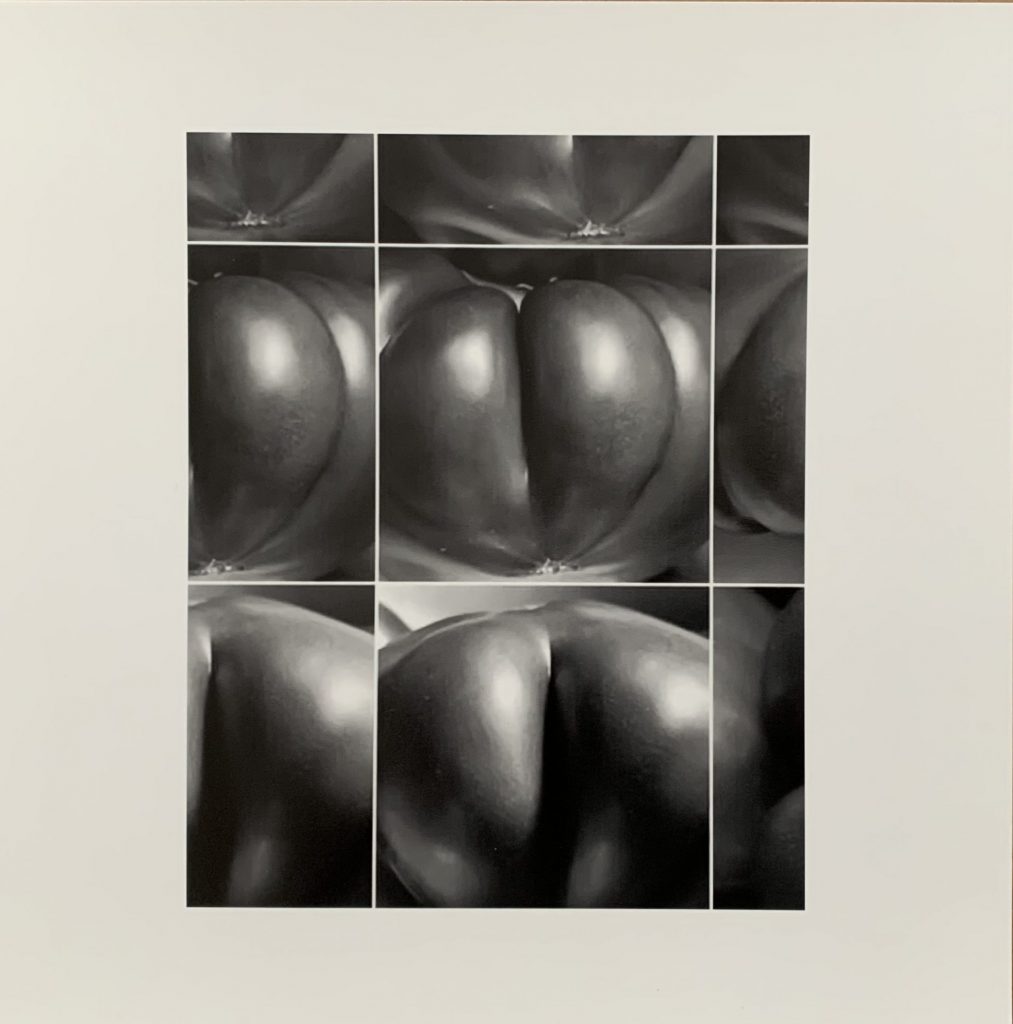
I Say Tomato…
December 21, 2021“They took it down and it said, you violated our community standards on nudity and sex… I objected and I clicked the “This is not what it seems” option or “not what you think it is” or whatever it was. They reinstated (the post) and they sent me a notice of reinstatement with a little thumbnail of the damn tomato… which I took a screenshot of and posted to say I’ve been reinstated… and they banned me again.”
Ruth Dick is a prolific photographer from Ottawa. She was one of our very first featured artists here at curated. where I wrote:
“Ruth Dick is a master at capturing the solitary. Almost every image she takes focuses intently on a single object, somehow stimulating a desire to engage in self-reflection… Like O’Keefe, Ruth is able to conjure up form and substance in abstract ways that deftly imbue her images with fresh import. A pepper is not a pepper.”
Things are still not quite what they seem. Her racy photographs have recently caused quite a bit of controversy, and have even been meta-banned. I spoke to Ruth about the implications of this in a recent conversation. You can listen to the podcast by clicking here.
More images by Ruth can be enjoyed on her Instagram account @photos_uncurated. ~ Mark Walton
Read More
Rebecca from Alec Soth’s series Niagara, 2005
June 9, 2021Alec Soth, Rebecca, from the series Niagara, 2005
Soth’s images from his Niagara series are contradictions, and though he employs Niagara, N.Y., it might as well be Niagara Falls, ON, as I see the latter, familiar to me both as a child and adult, as well. There’s the obligatory tourist shots of the Falls, but these seem like fanciful ideals when contrasted with the motel facades and the people he captures, which are grittier. This is the real Niagara I know: a site that seems darker than the postcards, or a honeymoon long since gone stale. These are scenes that have much in common with films like Disappearance at Clifton Hill (2019), Niagara Falls (1953) or Falling Angels (2003) – in that last, it looms in the subtext, only seen near the end, but a site of death, perhaps accidental, perhaps intentional. Soth’s people and places might be illustrations for Cataract City (2013), a tale of desperation also about a place that has a thin shiny veneer, already worn and flaking before we even scratch at it further.
A final note: a contemporary photographer in Niagara is offering what might be considered an update on Soth’s vision. Jon Lepp’s The Official Open for Business Series is like checking in, on Soth’s Niagara, and the irony of the title is appropriately bleak, like the world of Soth’s Rebecca, that her child also now inhabits.~ Bart Gazzola
Read More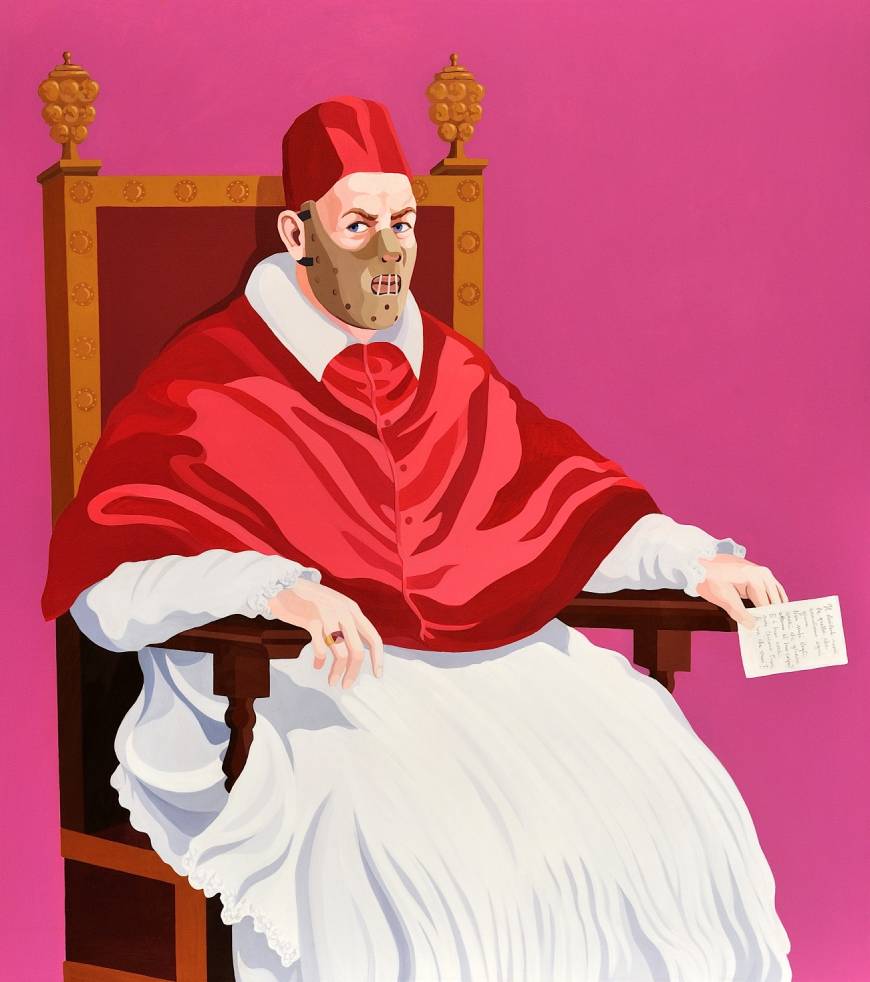
Il silenzio dell’Innocenzo, 2011
May 26, 2021Guiseppe Veneziano, Il silenzio dell’Innocenzo, 2011
To call Guiseppe Veneziano a controversial artist is an understatement. His more challenging works have garnered him fame and censorship, but often his pieces about Koons or Hitler are more stylish provocation than substance, like a child learning a new profanity. But the work I’m sharing today by Veneziano builds upon past artists whose portraits, centuries or decades later, still unsettle us. That this image is less trite and exists more so in the space where art, or art history, can be both subversive and yet direct, is why I consider it worthwhile. 𝘐𝘭 𝘴𝘪𝘭𝘦𝘯𝘻𝘪𝘰 𝘥𝘦𝘭𝘭’𝘐𝘯𝘯𝘰𝘤𝘤𝘦𝘯𝘻𝘰 (2011) appropriates Spanish painter Diego Velázquez Portrait of Pope Innocent X (c.1650), but with the addition of the ‘mouthguard’, so well known to us from Hannibal Lecter. 𝘐𝘭 𝘴𝘪𝘭𝘦𝘯𝘻𝘪𝘰 𝘥𝘦𝘭𝘭’𝘐𝘯𝘯𝘰𝘤𝘤𝘦𝘯𝘻𝘰 has more in common, perhaps, with the painting Study after Velázquez’s Portrait of Pope Innocent X (1953) by Francis Bacon. My own history brings to mind Metis artist Michel Boutin’s amusing and disturbing painting from his Great King Rabbit series: one of his ‘rabbits’ is in papal drag, looking feral, with large teeth, the better to eat you with, my dear (like the skulls of the victims that adorn his throne, with a paw richly adorned in rings, another gripping a stack of cash).
Click HERE for more.
Read More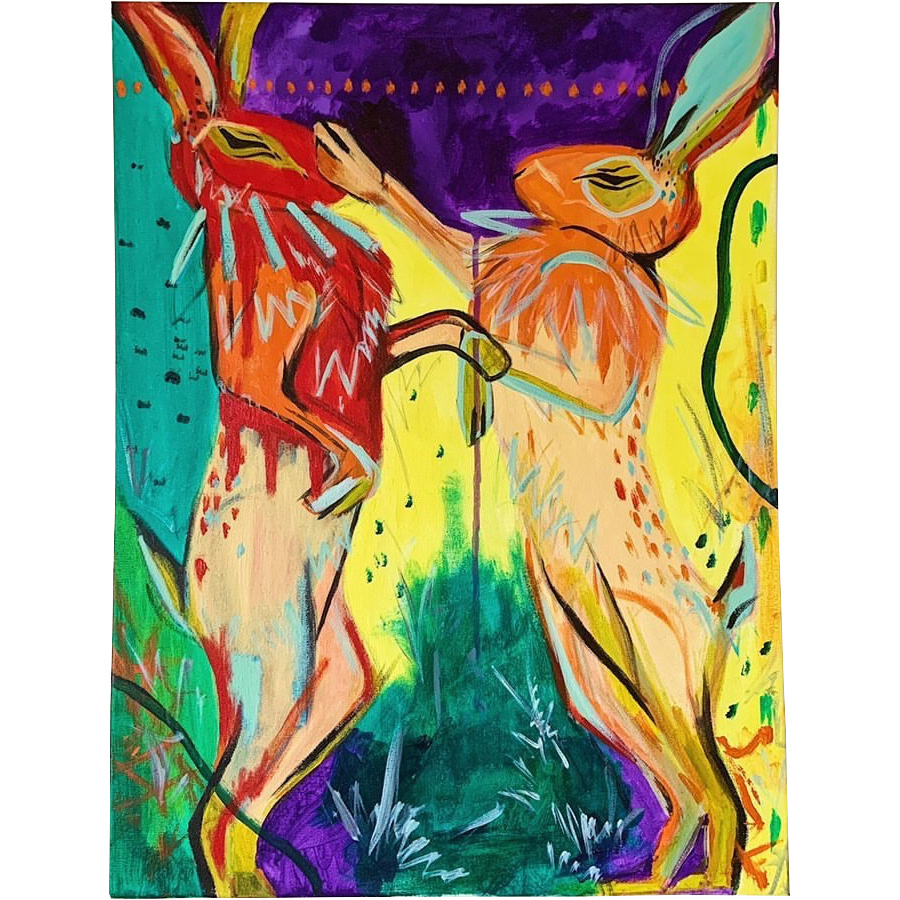
Alors on danse
May 4, 2021Ashley Guenette’s Alors on danse (Let’s Dance) is one of a series of animal acrylics she has created that are a cross between Canadian myth and Aesopian fable. They are definitely “of the north” and express how closely connected we are to the land from a cultural standpoint in this country.
You can find Ashley on Instagram and at ashleyguenette.com
~Mark Walton
Read More
The Glamour Crew, 1993
May 8, 2021Attila Richard Lukacs, The Glamour Crew, 1993
Atilla Richard Lukacs, for a time, was among the first rank of painters in Canada, if not the world, in his blend of figurative and narrative tropes, appropriating and fracturing art historical references. This work is from his E Werk series, and seeing this monumental (approximately four metres by six metres) painting in person (which I was lucky enough to do, in London, although dwarfed by the figures in his scenes) offers what painting can, and should, be. If you’ve read Timothy Findley’s book Headhunter, it’s understandable to think that his character Julian Slade is based upon Lukacs. At an opening of new paintings, by Slade, in the book, the fictional artist offers the following terse and confrontational statement: “You will see here…savage acts which have been done too long in darkness. It is my belief they should be done in the light. And to that end – these paintings.” Many more of Lukacs’ evocative, if unsettling, painted works can be seen here. ~ Bart Gazzola
Read More
Recent Comments